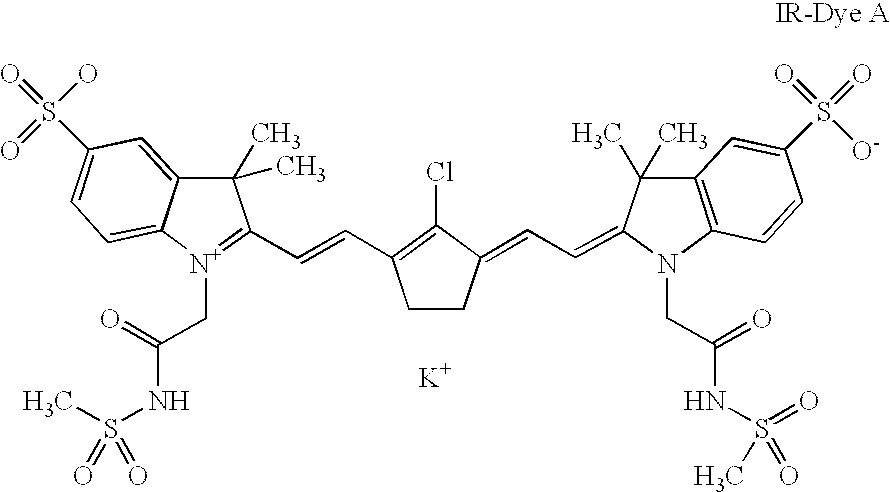Processless thermal printing plate with cover layer containing compounds with cationic groups
- Summary
- Abstract
- Description
- Claims
- Application Information
AI Technical Summary
Benefits of technology
Problems solved by technology
Method used
Image
Examples
Embodiment Construction
On top of an aluminum substrate was coated the IR-sensitive layer to a wet coating thickness of 70 .mu.m from a solution having the following composition:
17.28 g of a TiO.sub.2 dispersion in water (average particle size 0.3 to 0.5 .mu.m)-25.97% w / w.
8.44 g of hydrolyzed tetramethylorthosilicate in water -24.86% w / w.
1 g of wetting agent -5% w / w.
9.11 9 of non-ionic stabilized polystyrene latex -12.8% w / w.
0.20 g of IR-dye A
33.95 of water. ##STR1##
This layer was hardened for 12 hours at 67.degree. C. and 50% R.H. Imaging element I was so obtained. Imaging elements II, III, IV, V, VI were obtained by coating on top of the imaging element I a hydrophilic layer from a 1% w / w solution from a diethylaminoethoxylated dextran (Dormacid.TM. from Pfeifer and Langen). The hydrophilic layer was coated to a dry coating thickness of 0.05 , 0.10, 0.25, 0.50, 0.75 g / m.sup.2 respectively.
Imaging element VII was prepared by treating imaging element I with a 1% w / w solution in water of Dormacid.TM. by rin...
PUM
| Property | Measurement | Unit |
|---|---|---|
| Linear density | aaaaa | aaaaa |
| Linear density | aaaaa | aaaaa |
| Linear density | aaaaa | aaaaa |
Abstract
Description
Claims
Application Information
 Login to View More
Login to View More - R&D
- Intellectual Property
- Life Sciences
- Materials
- Tech Scout
- Unparalleled Data Quality
- Higher Quality Content
- 60% Fewer Hallucinations
Browse by: Latest US Patents, China's latest patents, Technical Efficacy Thesaurus, Application Domain, Technology Topic, Popular Technical Reports.
© 2025 PatSnap. All rights reserved.Legal|Privacy policy|Modern Slavery Act Transparency Statement|Sitemap|About US| Contact US: help@patsnap.com

